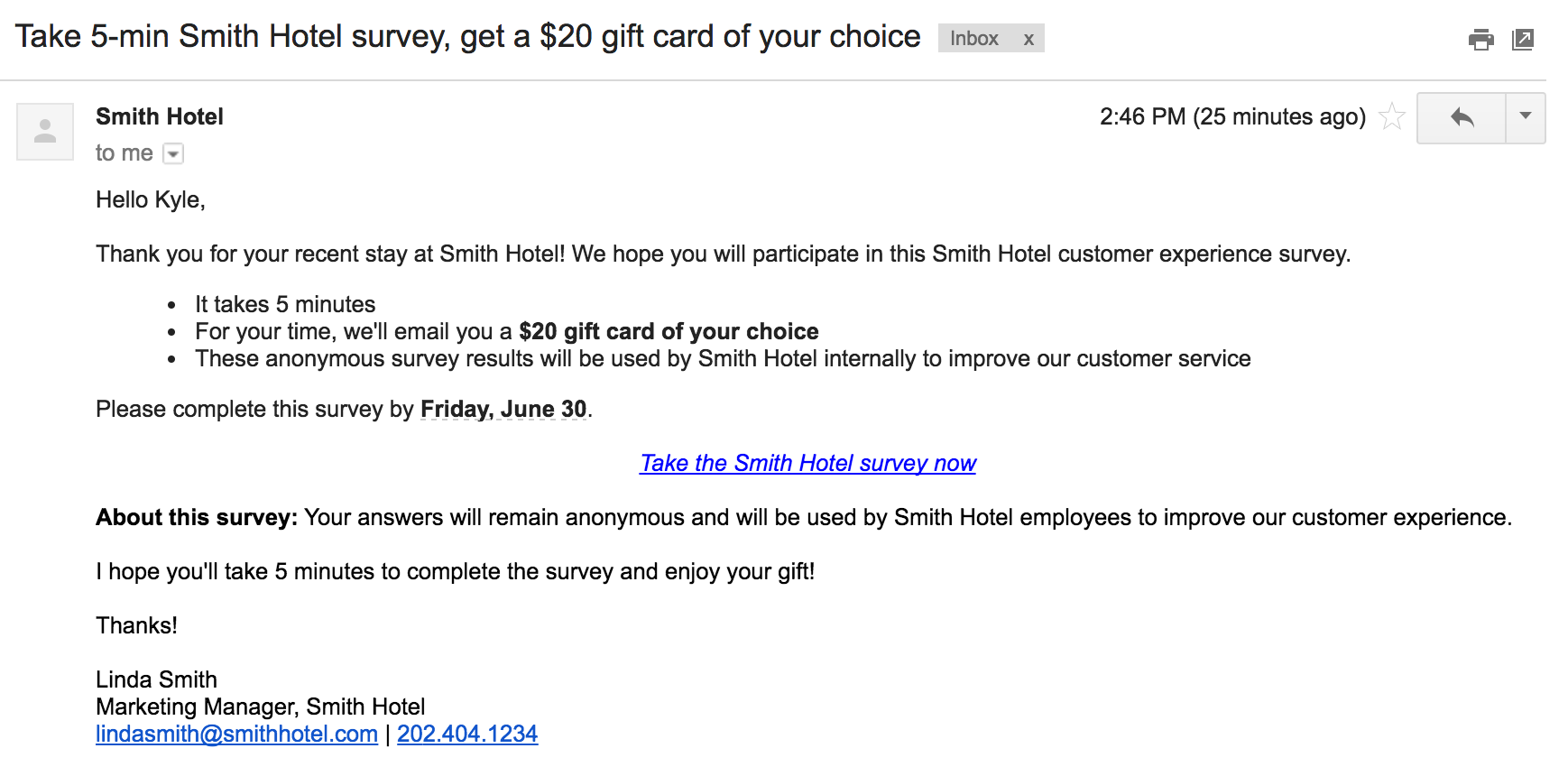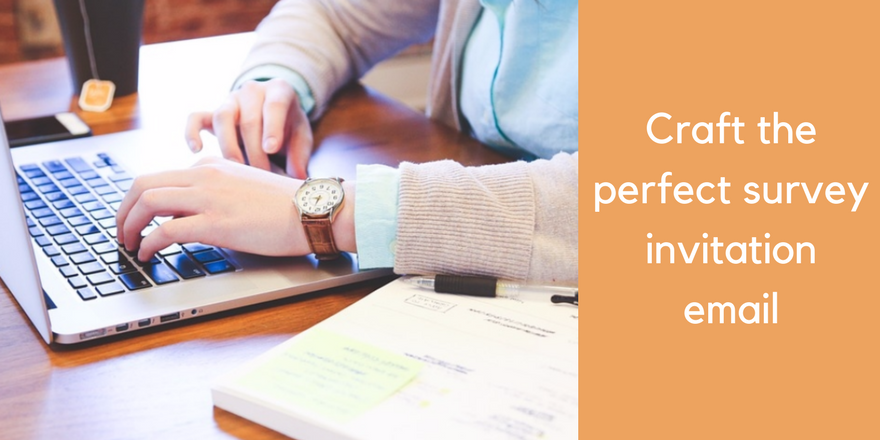Fortunately, there are simple things researchers can do when crafting a survey invitation email template that will maximize survey response rates. In this article, we will cover easy to follow best practices for crafting a great survey email invitation. We will then walk through a free sample survey email invitation template that you can use for your own emails.
Make it clear it’s from you
The email should be clearly “from” your organization. If the sender is someone the recipient recognizes, they’re much more likely to open and engage with the email.
Write a descriptive subject line for your survey e-mail
Next, you have to make the subject of the email clearly define the email’s purpose. If the recipient can’t tell that it’s a survey invitation email with just a glance, there’s a chance they’ll ignore it. It should explicitly mention the survey, without using spam buzzwords like “free!” or words in all caps. Some email providers will move your email to the spam folder if the subject contains certain words. These spam “trigger words” can be phrases or words as simple as “cheap.” Make sure you spend time making your subject line acceptable.
Why them?
The first thing you should do in the email
Explain the survey’s purpose
Next, explain the survey’s purpose. How will their feedback help you as a company? For example, if it’s a customer satisfaction survey, explain how their feedback will make future customer interactions better. Mention whether the respondents’ identities will remain anonymous, and whether or not the results of the survey will be made public. If your survey is meant to be anonymous, make sure you have the proper settings activated to actually keep anonymity intact. Popular survey management services often make it easy to keep respondents anonymous.
How much time will it take?
Your invitees are unlikely to click the survey if they don’t know how long it takes. Explicitly mention the length of the survey, and be realistic. Understating the length of
Survey incentives – What’s in it for them?
Everyone is busy these days. So a powerful way to increase survey response rates is to thank respondents for their time by offering a reward for taking the survey. If included, survey incentives are a key factor in driving response rates and achieving sufficient participation. Make sure your reward offer is placed at beginning of the email invitation and that it stands out. The amount of your incentive will vary depending on the nature of your survey. Incentives can range from around $10 for short surveys for professional staff or consumers to $100 or more for longer surveys targeted at executives and highly paid professionals.
Sharing the results?
Another way to incentivize respondents is to share the results of your survey. Of course, this is not
Create Urgency
Finally, you need to set an obvious hard deadline that will encourage your respondents to complete the survey in a timely manner. Without this urgency, you may not get responses as timely as you want.
A Survey E-mail Invitation Sample
Below, we’ve included a sample template of a survey invitation email so you can get a feel for what works.

First, the email clearly identifies who it’s from and what its purpose is: Smith Company wants the recipient to take a short survey and receive a reward. Then, it succinctly explains the purpose and circumstances of the survey, preemptively answering questions that many recipients will have. The recipient is assured that the survey is anonymous, will be used internally to improve the webinar experience, and that it only takes five minutes.
The email then clearly defines a deadline: June 30. A prominent, easy to click
Summary
Having a well-constructed survey invitation email is critical. These invitations are easy to write, but many researchers make key mistakes that prevent their invitations from being effective. By following the tip in this article, you can easily drive up response rates and maximize your survey respondents.
Offering a reward for completing surveys is a proven way to drive up response rates. Learn how easy it is today with a free account from


